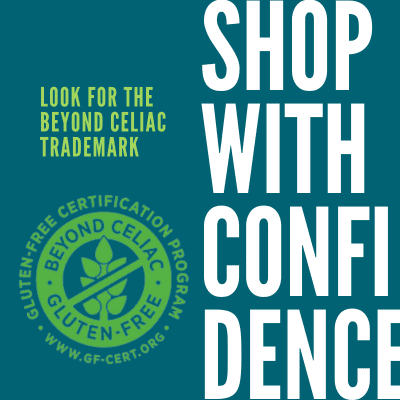Choosing Safe Foods: Seafood, Chocolate and Cheese
February 22, 2011
Question:
Newly diagnosed and filled with questions. Can you eat seafood when you have celiac disease? What about chocolate? Cheese? Thank you so much for your help!
From,
Karen
Answer:
Hi Karen. Every newly diagnosed celiac has lots of questions. The good thing is that you are asking these important questions from the start and not making assumptions on what you can and cannot eat. And I love this question, because seafood, chocolate and cheese are three of my favorite foods!
When you have celiac disease, you can (and should) eat fresh-prepared seafood. It is a great source of lean protein and micronutrients. As with all foods, you do have to be careful about cross contamination. When purchasing seafood from the seafood counter, ask whether it is pre-seasoned. If it is, you will need to ask for all ingredients added to the seasoning. In addition, you will want to see where the fish is positioned among other offerings. If a fish or shellfish selection is lying adjacent to something that has been breaded or seasoned with a gluten-containing ingredient, you should refrain from purchasing it. If you are purchasing packaged seafood items, you should read the ingredient statements carefully to make sure gluten isn’t hiding in a sauce or other ingredient. If the packaged brand makes other seafood items that are breaded or contain gluten in a sauce, you should check for a certified gluten-free label. If there isn’t one, call the manufacturer and ask diligent questions to be sure of the product’s safety. When eating out at a restaurant, you have to avoid any kind of breaded fish and want to make sure there isn’t any gluten in a sauce used to dress it. You should also verify that the fish hasn’t come into contact with a cooking or cutting surface on which a gluten-containing item was also prepared. Again, you will need to be diligent and remember to ask such questions.
While you can enjoy chocolate, you do have to be careful. For brands that have many products with add-ins and fillings (which are likely to have gluten-containing ingredients), the chocolate is often at risk for cross contamination. Calling the manufacturer is a must. I recommend sticking with certified gluten-free chocolate brands, but these are few and far between. If you can’t find certified gluten-free products then stick to smaller, artisanal chocolate brands where none of the products in the line contain gluten. However, this doesn’t guarantee safety, as many products are made in facilities that are shared with other companies whose products contain gluten. Again, asking diligent questions of the manufacturer is necessary.
Cheese, glorious, cheese! For processed cheeses, including slices, shredded and spreads, you will want to read the ingredient label as some items may contain gluten. Fresh cheeses prepared by a dairy or creamery should be gluten-free, provided nothing unconventional was added in the process. The best approach with these and all foods is to do your due diligence to find brands and products that are safe for you. Slowly, you will begin to expand your repertoire of safe foods. To make the process easier, I recommend purchasing a couple of books that will help you identify gluten free brands: 1) The Ultimate Guide to Gluten Free Living, by the Celiac Disease Center of Columbia University, and 2) The Essential Gluten Free Grocery Guide, by Triumph Dining.
Sincerely,
Rachel Begun, MS, RD



